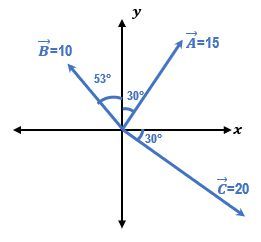In vector mathematics, there are two primary methods for multiplying vectors: the dot product (also known as the scalar product) and the cross product (or vector product). The dot product is particularly interesting because it results in a scalar value rather than a vector. This operation can be visualized as multiplying the magnitudes of two vectors by the cosine of the angle between them.
The formula for the dot product of two vectors **A** and **B** can be expressed as:
$$ \mathbf{A} \cdot \mathbf{B} = |\mathbf{A}| |\mathbf{B}| \cos(\theta) $$
where:
- $$ |\mathbf{A}| $$ is the magnitude of vector **A**.
- $$ |\mathbf{B}| $$ is the magnitude of vector **B**.
- $$ \theta $$ is the angle between the two vectors.
To calculate the dot product, it is essential to align the vectors tail to tail or head to head. The resulting scalar value reflects the extent to which the two vectors point in the same direction. For example, if both vectors are parallel, the cosine of the angle between them is 1, leading to a maximum dot product. Conversely, if the vectors are anti-parallel, the cosine is -1, resulting in a negative dot product.
When the vectors are perpendicular, the angle between them is 90 degrees, and the cosine of 90 degrees is 0, which means the dot product will also be 0. This indicates that there are no parallel components between the two vectors.
To illustrate, consider two vectors with magnitudes of 3 and 4. If they are perfectly aligned (0 degrees apart), the dot product is:
$$ 3 \cdot 4 \cdot \cos(0) = 12 $$
If one vector is at a 60-degree angle to the other, the dot product becomes:
$$ 3 \cdot 4 \cdot \cos(60) = 6 $$
For vectors that are anti-parallel (180 degrees apart), the calculation yields:
$$ 3 \cdot 4 \cdot \cos(180) = -12 $$
In cases where the angle is 90 degrees, the result is:
$$ 3 \cdot 4 \cdot \cos(90) = 0 $$
Understanding the dot product is crucial for various applications in physics and engineering, as it helps determine the relationship between two vectors in terms of direction and magnitude. The dot product effectively measures how much one vector extends in the direction of another, providing valuable insights into their interaction.


